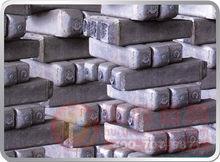
The molten steel is injected into the mold through the ladle and solidified to form a steel ingot. After the molten steel is smelted in the steelmaking furnace, it must be cast into a certain shape of the ingot or billet to be processed. The process of casting a steel ingot by a mold is simply referred to as an ingot.
Classification of steel ingots
Steel ingots can generally be divided into the following categories:
1) Unclean steel
The ingots have only undergone the most basic (lowest) deoxidation treatment. When the ingot is solidified, a layer of metal close to pure iron is formed around the bottom and bottom of the ingot mold, and carbon, sulfur and phosphorus are deflected near the central shrinkage hole. Oxygen in the metal creates a carbon monoxide roll that creates pores in the metal, but the pores disappear during the hot rolling process. The biggest advantage of unclean steel is that it can obtain several flawless steel surfaces - the surface is pure iron. Most of the unpurified steel has a carbon content of less than 0.1%.
2) Cap steel (capped steel)
The oxygen in the liquid makes the deflection near the shrinking center of the ingot lower than that of the unpurified steel, the surface is beautiful, the internal chemical composition is uniform, and the mechanical properties are better than the unpurified steel.
3) Full net steel
The oxygen in the liquid is completely removed before it is solidified to be limited to the minimum to avoid the edge effect of unclean steel. In the deoxidation treatment, an iron-silicon alloy is added to the molten steel to cause oxygen in the molten steel to be reversely generated into slag to obtain a uniform molten metal.
4) Semi-clean steel
The semi-clean steel is between the unpurified steel and the whole net steel. A small amount of iron-silicon or aluminum is added as an oxygen scavenger in the molten steel, and the amount added is just enough to remove the edge effect of the unpurified steel. Oxygen is fully decomposed.
5) Vacuum deoxidized steel (vacuum degassing steel)
By vacuum treatment, it is not necessary to add any oxygen scavenging element, so that the molten steel can obtain a sufficient oxygen scavenging effect and no non-metal intervening material is formed in the steel. The treatment process is to first increase the carbon content in the steel, and then the molten steel is vacuum casted, at which time carbon and oxygen will react to form carbon monoxide to gradually reduce the carbon and oxygen in the molten steel to a prescribed level. The steel is very clean because no deoxidizing elements that form solid oxides are added during the process.
Yixing Jinke Optical Instrument Co., Ltd. is a high-tech manufacturer committed to research, development and manufacturing of high-quality spectral consumables. With 50 years of experience in research, development and manufacturing, our products include: glass, Quartz Cuvettes, flow cell, Lens, reflector, filter, etc.
We have been continuously improving the company's R&D and preparation capabilities, optimizing the management system, and helping customers to continuously improve their product competitiveness. Our strategic partners cover chemical, pharmaceutical, biological, medical in vitro diagnosis, aerospace, communications, food, materials, environment, agriculture, inspection and quarantine and other fields.
As a spectrum accessories manufacturer with strong technical capabilities in China, Jingke Optics will try its best to provide more high-quality and convenient products and services for the majority of scientific researchers and instrument manufacturers, and work with you to create a better future!
Optical Elements,Diffraction Element,Diffractive Element,Diffractive Optical Element
Yixing Jingke Optical Instruments Co.,Ltd. , https://www.jkgxcn.com